How a Grove of Trees Helped End World War 2
Poplar trees are common in North America. Many times they are called cottonwood trees because they shed fluffy white “cotton” in spring. The “cotton” contains seeds that are picked up by the wind and carried to new places to germinate and grow. Poplar in Spanish is: Alamo. A grove of several poplar trees is: Los Alamos.
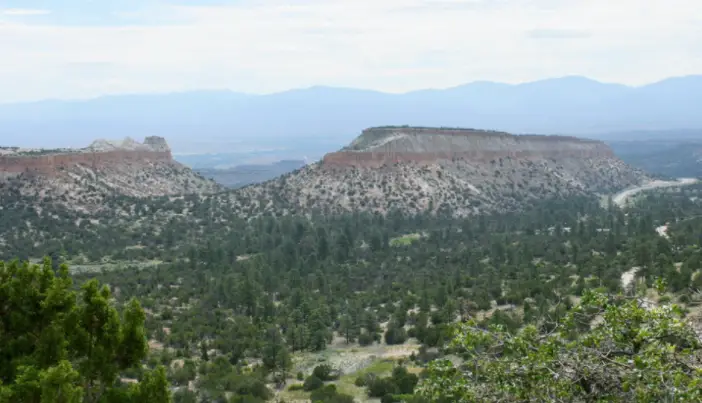
Poplar Trees Near Los Alamos, New Mexico
Hold that thought….
In the early 1930’s, Adolf Hitler and his National Socialist (Nazi) Party came to power in Germany. On September 1st, 1939, World War 2 began when Germany invaded Poland. The entire world became involved in war. It did not end until August 1945.
Scientific discoveries accelerated from the late 1800’s into the 1930’s. Nikola Tesla demonstrated wireless radio signals in 1891. Albert Einstein first published his theory of special relativity in 1905. In December 1938, two German scientists, Otto Hahn and Fritz Strassman, successfully proved nuclear fission (the splitting of the atom). This meant, in theory, an atomic bomb could be created. While the United States did not officially enter World War 2 until December 1941, American and other Allied scientists were aware that Germany would probably work on an atomic bomb.
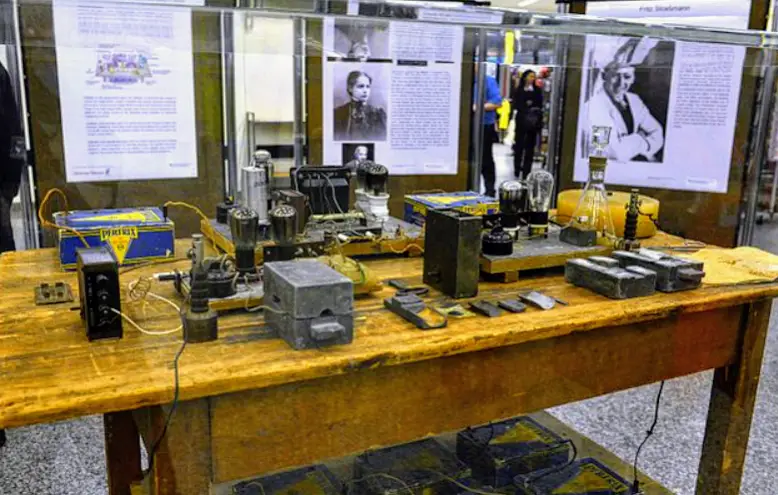
Otto Hahn Workbench (Replica) – Splitting of the Atom
It could be said that the world’s first nuclear arms race began here. Early in 1942, the United States started work on an atomic bomb and called this secret effort the Manhattan Project. The name came from the project’s headquarters office in New York City.
In September 1942, the leadership of the Manhattan Project thought it would be best to have one central laboratory. They wanted a place where scientists could do their work in a secure environment. A remote location was considered best. The shortlist included locations in Nevada, New Mexico, and Utah.
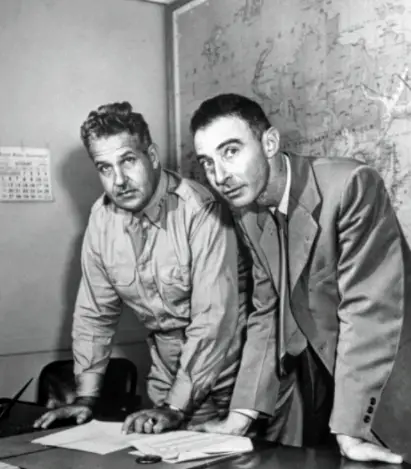
Gen. Leslie Grove and Robert Oppenheimer – Key Leaders of the Manhattan Project
The site chosen was at Los Alamos, New Mexico. It was inland, far away from large coastal cities. It was high in the mountains, quiet, secluded, and protected. And it was still at a time before satellites could discover secret facilities from space. It was a place near…a grove of poplar trees.
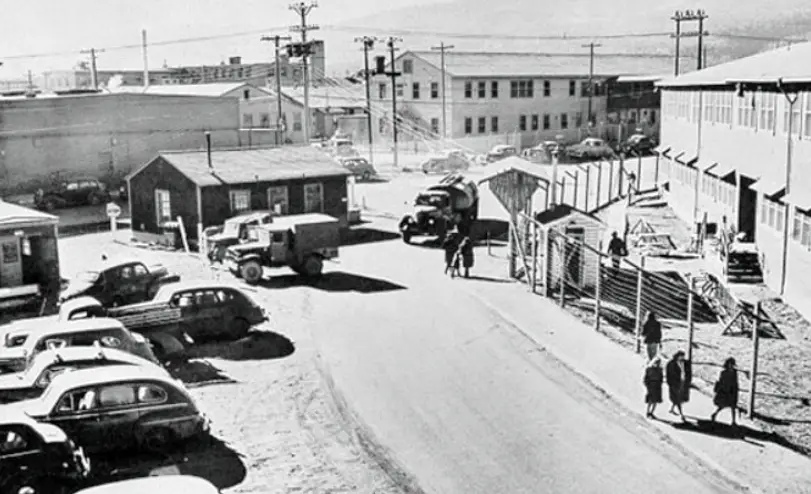
Entrance to Los Alamos Tech Area
In April 1943, work on different bomb designs began in earnest at the Los Alamos laboratory. Construction on nuclear reactors began at sites in Oak Ridge, Tennessee, and Hanford, Washington. Explosive material was needed for the first atomic bombs and reactors at these locations would provide Uranium isotopes and Plutonium.
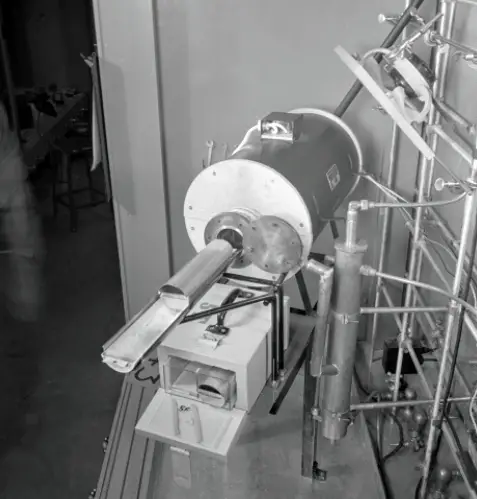
Plutonium Processing at Los Alamos
In 1944, the reactors in Tennessee and Washington started making fuel that the teams in Los Alamos could use for their tests. Designs changed and refinements continued. Toward the end of the year, the German Army seemed to be in retreat. In December, this changed when German tanks broke through Allied lines in what later was called the Battle of the Bulge.
Early in 1945, US forces in the Pacific were taking heavy losses. Japanese forces were heavily entrenched on islands leading back to the Japanese homeland. These were islands like Saipan, Iwo Jima and Okinawa. Tokyo was bombed heavily, but Japanese leadership showed no signs of giving in.
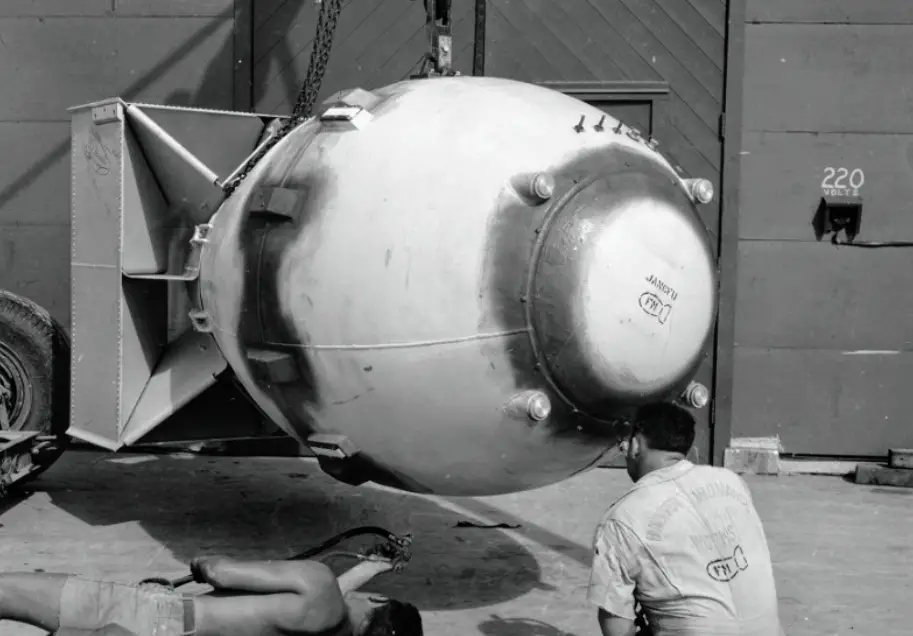
Los Alamos Bomb Being Assembled
Germany surrendered and the war in Europe ended on May 7, 1945. Allied leaders feared too many deaths if the war continued on too long in the Pacific. Bombing of the Japanese homeland continued. Allied leaders threatened the Japanese government with “utter destruction.” The Japanese vowed to fight on.
About 250 miles south of Los Alamos, the world’s first nuclear explosion was set off near Alamogordo, New Mexico. That was on July 16, 1945. Three weeks later, on August 6th, a B-29 bomber dropped another bomb called “Little Boy” on the Japanese city of Hiroshima. The blast was equal to about 13 kilotons of TNT. Japan’s leadership did not give in. Three days later, on August 9th, a B-29 dropped another atomic bomb on the city of Nagasaki. That bomb, called “Fat Man,” was more powerful, about 19 kilotons of TNT. Five days later, the Japanese government surrendered. World War 2 was over.
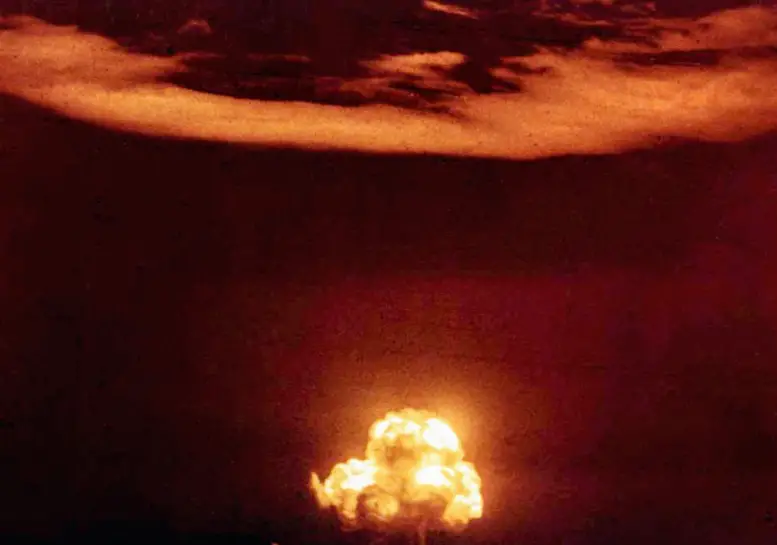
Trinity Test (16 July 1945)
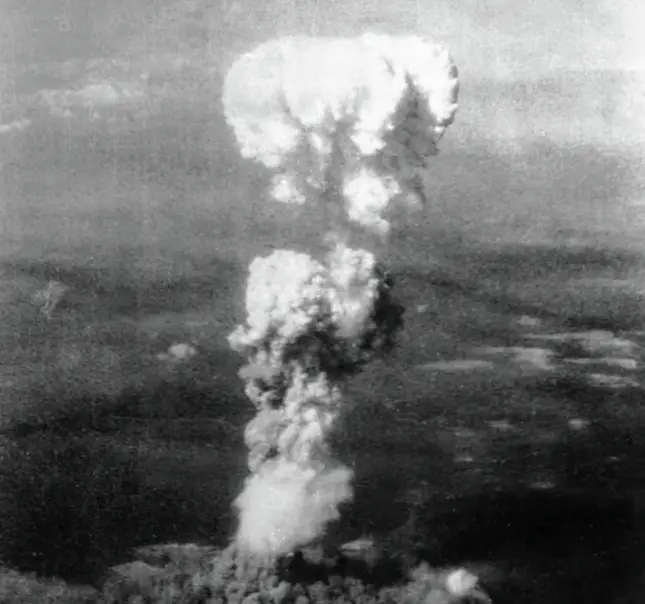
Hiroshima Bomb Drop (6 August 1945)
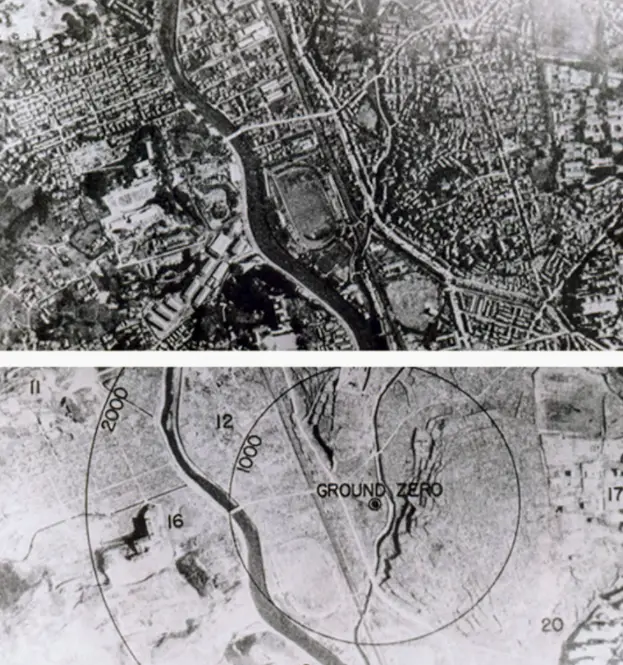
Nagasaki Bomb Drop (9 August 1945)
Both of the atomic bombs dropped on Japan were created at the Los Alamos, New Mexico, laboratory. Estimates put total deaths from World War 2 at about 75 million. Of these, 20 million were military. Japanese deaths from the Hiroshima blast have been calculated at 140,000. Deaths from the Nagasaki blast have been calculated at 70,000.
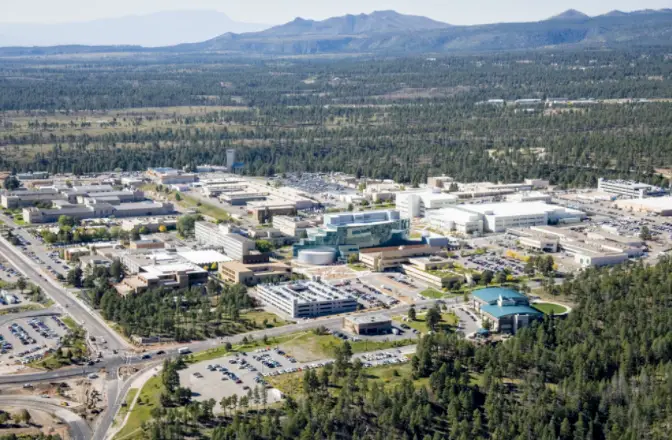
Los Alamos National Laboratory Today
What happened to the Los Alamos laboratory? It is still operating today. Atomic bombs are no longer made there. Today, the Los Alamos National Laboratory (LANL) is the senior laboratory for the United States Department of Energy (DOE). The modern mission of the LANL is “to solve national security challenges through scientific excellence.”
And all of this at a grove of poplar trees in New Mexico…

